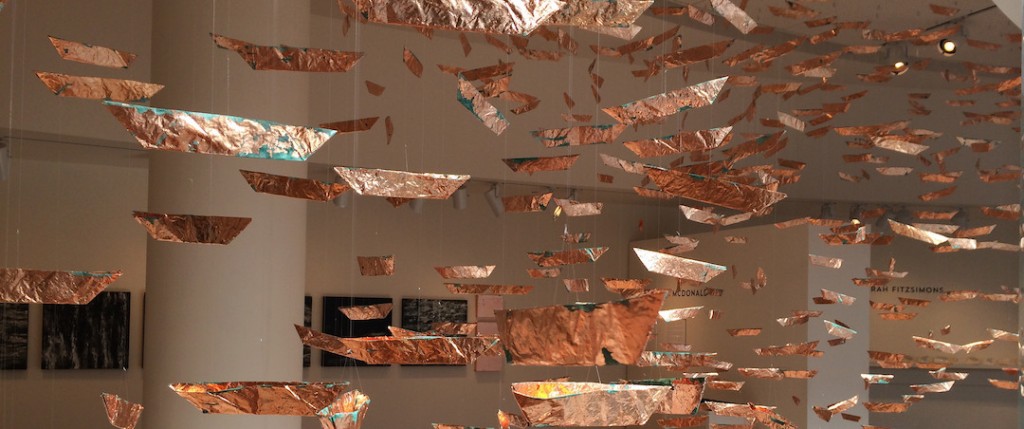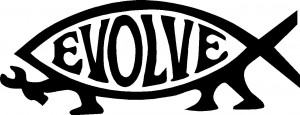While in NYC last month I attended a forum produced at the New York Public Library for the Performing Arts aimed at exploring the role of the arts in an interdependent society. The forum was held in conjunction with the 13th annual Global Interdependence Day. To be honest, when I received the invitation I had no idea such a day existed and felt a bit sheepish that I had missed the first twelve. Global Interdependence Day is an initiative arising from Benjamin Barber’s Interdependence Movement. (Again, I had no idea there was such a movement afoot, although I was familiar with Benjamin Barber’s perspectives on globalization). The five-hour forum was quite worthwhile, albeit, woefully under-attended—an outcome I chalked up to timing and weather (it was held on a gorgeous Sunday afternoon).
At the same time, it’s also possible that I’m not the last person in the arts and culture sector to be made aware of the Interdependence Movement and Global Interdependence Day. If you’re also in the dark about this movement, read on.
Interdependence and Vulnerability
What is the Interdependence Movement? Here’s a description I grabbed from the take-home literature:
The Interdependence Movement, founded by Professor Benjamin Barber, is a network of citizens without borders, including artists, educators, students, politicians, entrepreneurs, civic and religious leaders and other activists, who recognize the interdependent nature of our world and advocate for new forms of constructive interdependence. They aspire to solve the multiple cross-border challenges in economics, ecology, technology, war, disease, and crime that confront us. They are doing this by imagining, creating, and practicing new, just, rewarding, human, social, economic, cultural and governance relations, and stewardship of our common climate. (Emphasis added.)
In his introductory remarks at the event, Benjamin Barber several times used the phrases “bad interdependence” and “good interdependence.” Intrigued by this framing, I did an Internet search and came across a speech by Bill Clinton published in the Interdependence Handbook (edited by Barber and Sondra Meyers) in which he gives an example of each and then talks about strategy implications. Here’s an excerpt:
I believe we live in an age normally referred to as globalization, sometimes referred to as the global information society. I prefer the term “interdependence,†because it goes far beyond economics. There’s good and bad in it. I have a cousin that lives in the hills of northwest Arkansas that plays chess over the Internet with a guy in Australia twice a week. They take turns figuring out who’s got to stay up late. On the other hand, 9/11 was a testimony to the power of interdependence. … The Al Qaida … used open borders, easy travel, easy access to information and technology to turn an airplane into a weapon of mass destruction, to murder nearly 3,100 people, in Washington, Pennsylvania and New York from 70 countries. It’s a story of global interdependence, the dark side of global interdependence.  …
So if interdependence can be positive or negative, it’s obvious what we ought to be doing. … We need a strategy that builds up the positive and beats down the negative. We need to recognize that interdependence is inherently an unstable condition, and we need to move the world toward a more integrated global community defined by three things: shared benefits, shared responsibilities and shared values.
I then went in search of a neutral definition of interdependence.
The concept, of course, means different things depending on the field (biology, economics, international relations, etc.). The most common basic definition seems to be “mutual dependence between things.”  I also came across an interesting distinction made by political science/international relations scholars between sensitivity interdependence, which refers to mutual influence, and vulnerability interdependence, which refers to mutual need fulfillment that would be costly to forego.*
That word–vulnerability–caught my attention. Perhaps because I’ve watched all those Brené Brown TED Talks. (Yep, I’m a fan.)
Bear with me here.
Though Brown has been Oprah-fied over the past couple of years (and, as a result, some may be inclined now to dismiss her as a celebrity more than a scholar) she is a legit researcher and professor at the University of Houston (her field is social work) and she has spent more than a decade studying vulnerability in individuals. If you’ve watched any of her TED talks then you know that one of her research findings is that there are two basic responses to vulnerability: people can either become fearful,  distrustful, closed-off, even aggressive in relationship to others; or they can stay courageous, authentic, open, and compassionate–what Brown calls “wholehearted.”
(It strikes me that the same could be said of countries.)
Putting this all together, here’s where I come out: there is a tremendous need for the arts in our interdependent (read: vulnerable) world. As the five projects discussed at the Lincoln Center event (below) seem to attest, the arts can be an effective tool in the face of injustices, apathy, mistrust, ignorance, and fear. The arts foster understanding, connection, empathy, a sense of common humanity, and the imaginative pursuit of beautiful solutions to our most pressing systemic problems.  Here are the five quite inspiring projects that were discussed:
- Actor Kathleen Chalfant read excerpts from the play Guantanamo: ‘Honor Bound to Freedom, and then discussed with event moderator James Early its varying reception and impact in the UK and the USA several years back.
- Producer Anne Hamburger and Lt. Colonel (retired) Art DeGoat showed video from, and discussed the impacts on various audiences of, the ongoing project Basetrack Live, an exploration of the impact of war on veterans and their families.
- Mohsin Mohi Ud Din talked about the project Me/We Syria which uses handheld cameras to activate storytellers and change-makers in Syria’s Zaatari refugee camp.
- Omar Mullick and Bassam Tariq showed excerpts from their acclaimed documentary, These Birds Walk, about a runaway boy in Pakistan and the humanitarian efforts of Abdul Sattar Edhi to save tens of thousands of orphans and abused women.
- Michelle Moghtader discussed the collective project of Shared Studios, Portals, which places gold shipping containers in cities and villages around the world and, using immersive audio and video technology, enables individuals across the world to meet face-to-face and have a conversation as if in the same room.
We need to “keep looking and looking, until at last we see and we feelâ€
As I walked home from Global Interdependence Day 2015 I began mulling over performances or exhibits I had seen in the course of my life that fit this bill. The first that came to mind was  the six-hour work of French theater-maker Ariane Mnouchkine—The Last Caravansary (Odysseys)—which I saw at Lincoln Center Festival a decade ago. Based on letters and images taken from refugee camps, its epic theater approach effectuated Mnouchkine’s desire that “we keep looking and looking, until at last we see and we feel.â€[1]  One of the most touching and salient techniques of the piece was that all the characters, as well as the sets and props, were transported across the massive stage on large dollies operated by stagehands/actors. Here’s how Charles Isherwood described the effect of this in his review:
These questing Kurds and Chechens and Iranians and Russians are forever in transit, drifting between familiar homes left behind and a hoped-for-refuge, and at the same time frozen in place, immobile, paralyzed by their powerlessness to shape their destiny, or event place two feet on firm earth.
Mnouchkine’s theater collective is known for using aesthetically beautiful, massive theater works to make social and political critiques of particular local and global conditions. Her work is dynamically rooted in, and responding to, the present world.
Clearly not all art is aimed at such ends–for instance, some quite justifiably simply wants to entertain and lighten the weary heart. But I would argue that in these times we desperately need courageous artists (and producers, presenters and funders who will give them a platform) and beautiful works that hook our attention, draw us out of ourselves, and compel us to look, and to keep looking until at last we see and we feel. I can name a number of experiences I have had over the past year or so that have done this (for me) including: The Public Theater/Broadway musicals Fun Home and Hamilton; the exhibition America is Hard to See that opened the new space of The Whitney; an On the Boards TV download of Young Jean Lee’s The Shipment; a stunning solo piece by the choreographer Crystal Pite called “A Picture of You Falling,”performed by Jesse Bechard of the Hubbard Street Dance Company; a cozy exhibition on how water shapes us, called Waterways, at the Watrous Gallery in Madison (pictured above) and one at the Chazen Art Museum (also in Madison) on the human figure in contemporary Chinese art; an exhibition by South African artist William Kentridge, If We Ever Get To Heaven, at the Eye Museum in Amsterdam; and the books Citizen: An American Lyric by Claudia Rankine and Behind the Beautiful Forevers by Katherine Boo.
As I think about these art works, those discussed at the Lincoln Center event, and many others–and their potential influence–I am inspired and hopeful.
And, yet, there is still work to be done.
Nurturing “public spaces that are not marketplaces”…Â
Global Interdependence Day ended with everyone signing copies of the Declaration of Interdependence, which reads:
We the people of the world do herewith declare our interdependence as individuals and members of distinct communities and nations. We do pledge ourselves citizens of one CivWorld, civic, civil and civilized. Without prejudice to the goals and interests of our national and regional identities, we recognize our responsibilities to the common goals and liberties of humankind as a whole. We do therefore pledge to work both directly and through the nations and communities of which we are also citizens.
- To guarantee justice and equality for all by establishing on a firm basis the human rights of every person on the planet, ensuring that the least among us may enjoy the same liberties as the prominent and the powerful;
- To forge a safe and sustainable global environment for all-which is the condition of human survival—at a cost to peoples based on their current share in the world’s wealth;
- To offer children, our common human future, special attention and protection in distributing our common goods, above all those upon which health and education depend;
- To establish democratic forms of global civil and legal governance through which our common rights can be secured and our common ends realized;
- To foster democratic policies and institutions expressing and protecting our human commonality; and at the same time,
- To nurture free spaces in which our distinctive religious ethnic and cultural identities may flourish and our equally worthy lives may be lived in dignity, protected from political, economic and cultural hegemony of every kind.
Reading this statement I recognized that we need something more than the creation of bold, beautiful, socially relevant artworks.
Arts organizations in the US, in particular, must also more earnestly pursue the goal of being a “free space†(the last bullet of the Declaration of Interdependence above)—a space where people of in any given community can come together across divides and exist in relationship to one another on equal terms. Economic, cultural, geographic, and social barriers, misunderstandings, wrong beliefs, and biases persist despite much talking about them for a handful of decades, at least.
As Culturebot’s Andy Horowitz wrote recently in his post, The NEA at 50 and the Death of the Public Good:
In the absence of a meaningful commitment to, or belief in, the public good, all art – high, low, or otherwise – becomes merely entertainment product to be marketed to consumers. When we abandon the idea of the public good, we undermine our ability to create public spaces that are not marketplaces. This includes not only theaters, museums and concert halls, but also schools, libraries, and public broadcasting networks (as Sesame Street’s recent decampment to HBO reveals). The real crisis in the performing arts is the sector’s wholesale capitulation to a set of values that is inherently antithetical to the actual benefit of the arts to citizens in a democracy.
“… transforming us into people who care.â€
The past couple of weeks, since attending the event at Lincoln Center, I have been thinking about my own work as a researcher, lecturer and blogger and what I am doing (or not doing) to advance the values of the Interdependence Movement.  Of everything I’ve worked on the past five years, since leaving Mellon, I have to say that the course on beauty and aesthetics that I taught last spring strikes me as being most directly aimed at fostering transcendental values like social justice, equality, sustainability, and a world of beauty. In between writing chapters of my dissertation on the American theater, I find myself daydreaming about returning to this work and thinking about what it could mean for every high school or college student to have the chance to take such a class–a class that one student characterized as, “transforming us into people who care.â€
Transforming us into people who care could be one of the most critical functions of the arts vis-à -vis our interdependent world.
***
What are your perspectives?
- Did you know about this movement? What are your thoughts on it?
- Would you or your organization sign the Declaration of Interdependence? Or have you already? Why, or why not?
- Do you consider yourself to be working in pursuit of goals like social justice, equality, democracy, and a world of beauty? If so, how? If not, what are your goals?
[1] July 19, 2005 review by Charles Isherwood in The New York Times – http://www.nytimes.com/2005/07/19/theater/reviews/never-touching-the-ground-in-a-constant-search-for-refuge.html?_r=0
*David A. Baldwin, “Interdependence and Power: A Conceptual Analysis” (1980).








